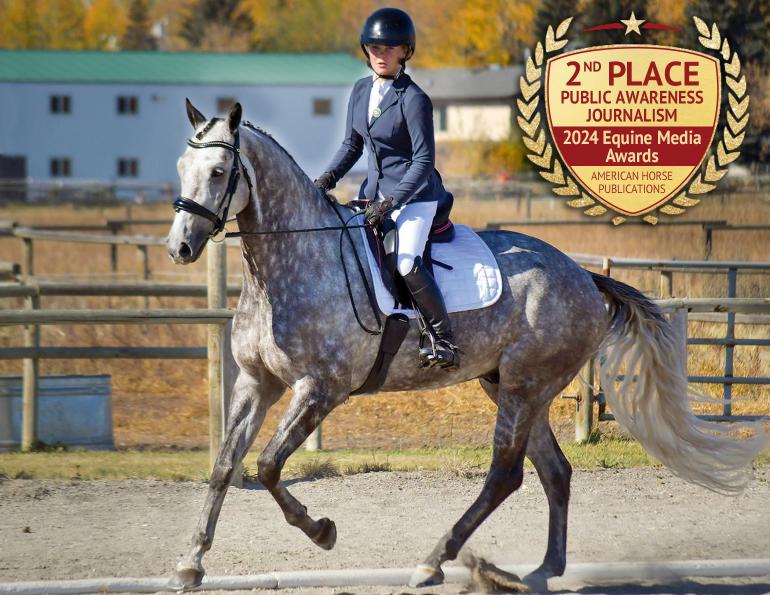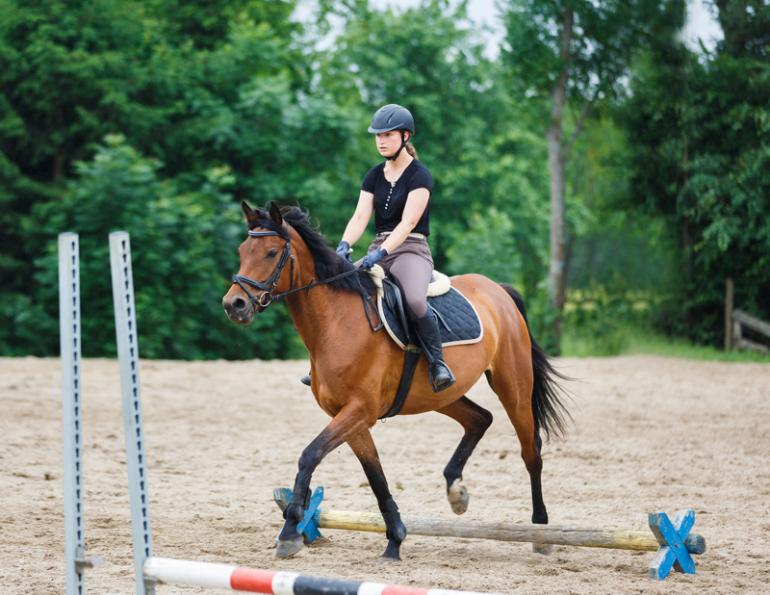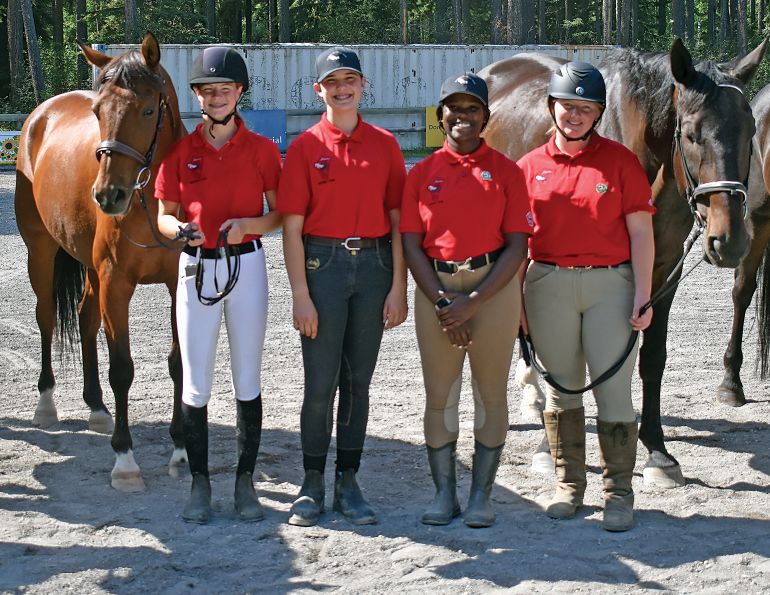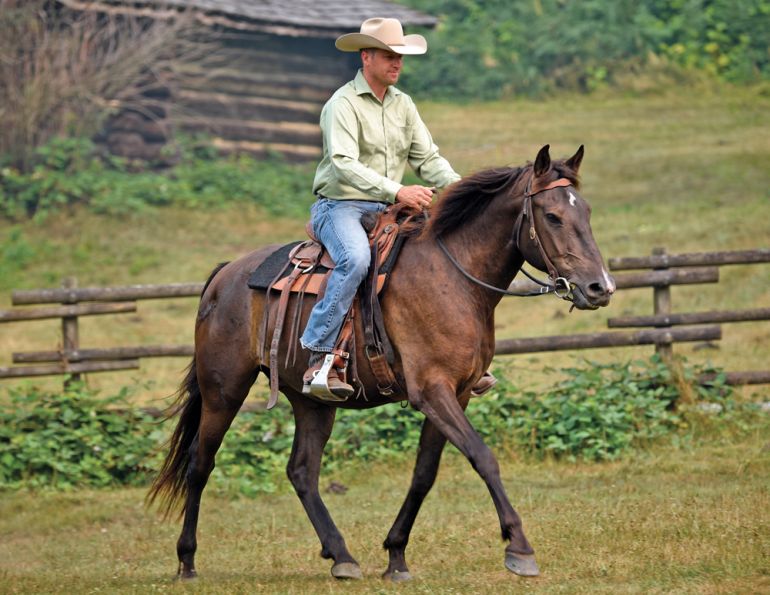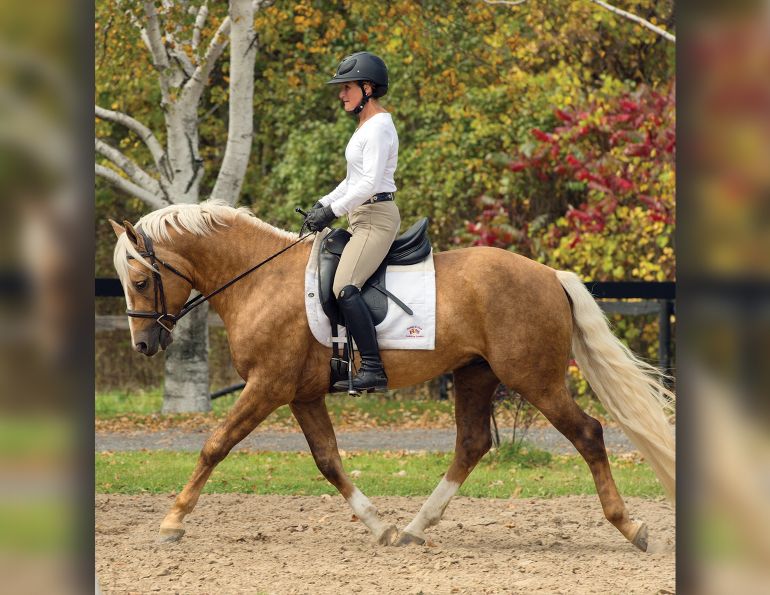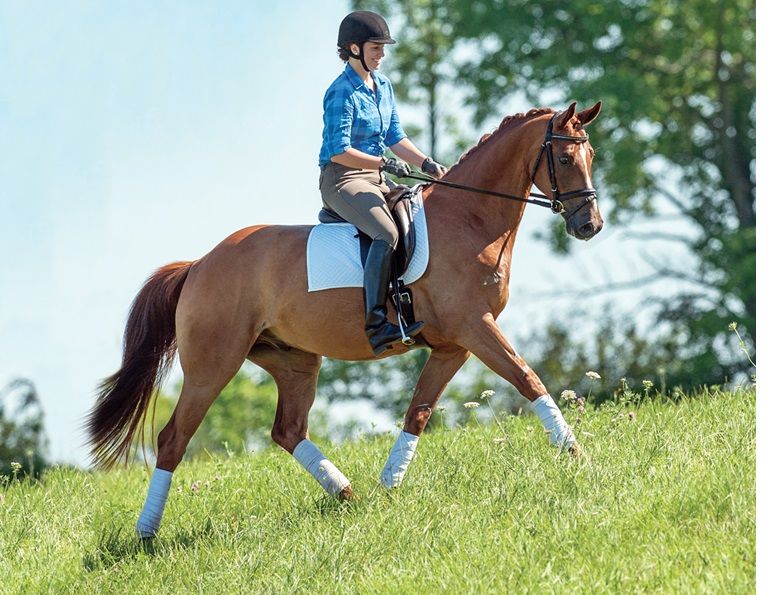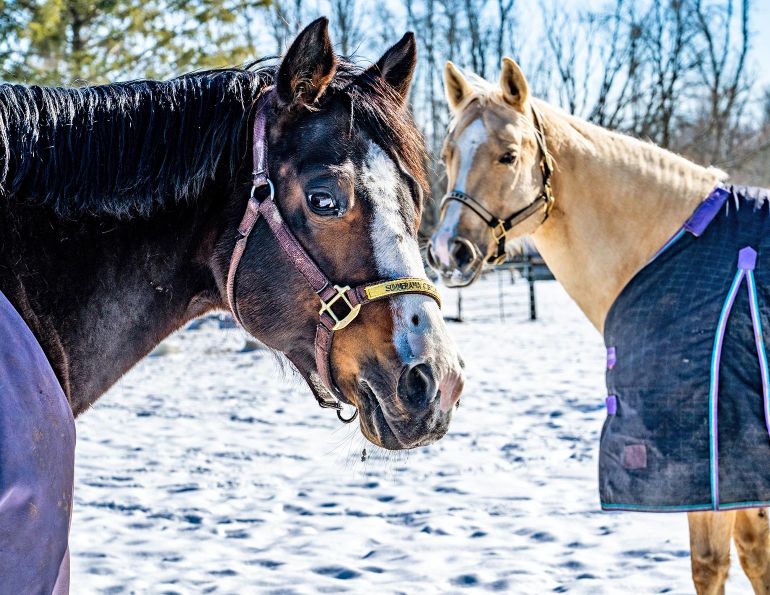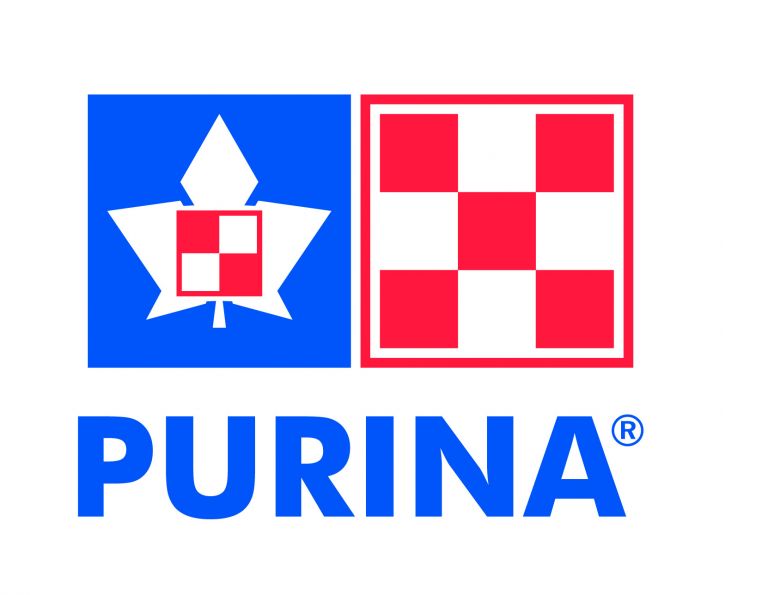By Tania Millen, BSc, MJ
It’s common for riders to compete at high levels today without advanced horsemanship knowledge. A rider’s success in the show ring seems to have greater value than their horse management skills, but that wasn’t always the case. Many of Canada’s former top riders credit Canadian Pony Club (CPC) for their horsemanship knowledge and acknowledge its importance to their success. The horse industry has since changed and now, riders rely on coaches to know what’s best for their horses.
“The need for riders to have horsemanship skills has decreased as coaches have taken a more active role,” Michelle Gilbert writes in her chapter titled ‘Sociocultural Changes in Canadian Equestrian Sport’ in Equestrian Cultures in Global and Local Contexts.
That changing focus — from individuals learning horsemanship skills to care for their own horses to a reliance on coaches — is just one of the challenges CPC is facing today. But Pony Club is still considered one of the most affordable ways for kids to get involved in horse sport — an increasingly expensive hobby.
For almost 90 years, CPC has educated children and youth about horses, riding, and stable management while promoting lifelong friendships and teamwork. It’s a volunteer-driven organization, with parents, alumni, grandparents, and youth members teaching lessons, managing shows, conducting testing, administrating clubs, and fundraising. It’s one of the few places where children, youth, and now adults can advance their horsemanship and stable management knowledge through a standardized system.
“By the time you get through your A [the highest level], you’re an expert,” says Kelly Brouwer, CPC’s Alberta South Region Rally Chair. “You’re a veterinarian and a farrier and everything else. You’re a lot more informed, and a lot sooner than if you’re trying to glean the information yourself.”
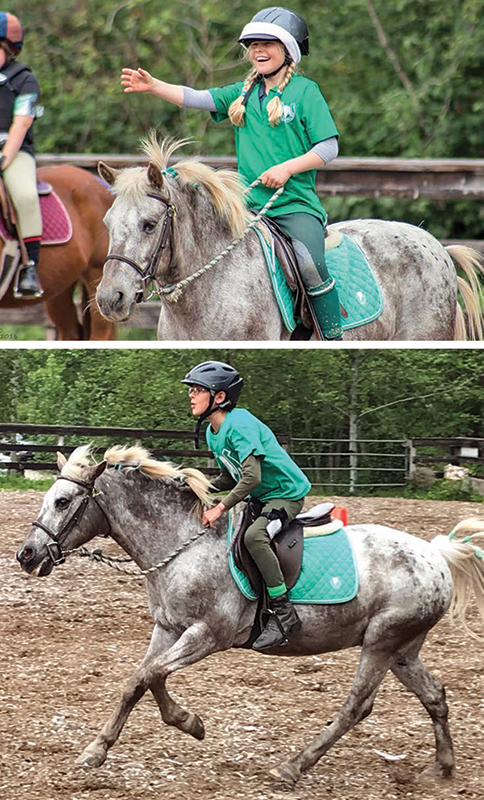
Pony Club is one of the most affordable ways for kids to get involved in horse sports. Pictured above are Nathan (bottom) and Claire McWhir (top) at a Prince Philip Games Playday at Panorama Ridge Riding Club in Surrey, BC in 2019. Photos: Chris Richardson
That’s consistent with the organization’s origins. Pony Club began in Great Britain in 1929 by those connected to upper class fox hunting clubs and the military. It was established to teach horsemanship and riding skills, and immediately attracted 10,000 members. Pony Club now has 100,000 members in over 20 countries and offers competitions in show jumping, dressage, tetrathlon, rallies (eventing), Prince Philip Games, and non-riding quiz.
Pony Club came to Canada in 1934 thanks to Brigadier (BG) General Clarence Sparks McKee and Colonel (Col)Reginald Symonds Timmis. Inspired by their vision of better horsemanship, the two founded CPC through the Eglinton Hunt Club in Toronto, Ontario, which youth could join for $0.75 per year.
BG McKee was born in Chicago in 1893 and joined the Canadian Army in 1913. After a decorated military career and life-altering riding accident, he became the general manager of Toronto’s Royal Winter Fair in 1945.
“Dad continued to hack and fox hunt at home and abroad until 1945, then hacked once or twice a week until he died,” said his son, Fraser McKee, for an article in Canadian Horse Journal in 2009.
Col Timmis was born in England in 1884 and joined Canada’s first cavalry force in 1914. In 1921, Col Timmis became the governor of the Arab Horse Society of Great Britain and was instrumental in bringing Arabian horses to Canada. In 1927, he was the first Canadian to win show jumping’s George III Gold Cup Challenge in New York.
Related: The Queen's Legacy - A Passion for Horses
Col Timmis subsequently became a veterinarian and wrote books about horsemanship, horse health, and training. In his book Riding and Schooling, Timmis wrote, “In offering these notes to the public, I hope they will be accepted in the spirit in which they are offered — to help our friend the horse, who for so many years has been the victim of ignorance and who, even now, is still the victim of much useless and senseless cruelty; and to help the rider who is anxious to learn more about horsemanship.”
BG McKee had similar interests. His son recalls that while watching the horse shows at local fairs, his dad would comment on the poor riding. Hence, after reading about the UK Institute of the Horse’s new Pony Club in a Horse and Hound magazine article, BG McKee wrote to the institute and asked about opening a Canadian branch. They said no, stating there was nobody in Canada worthy of hosting a Pony Club, but BG McKee and Col Timmis persuaded them otherwise. In 1934, Canadian Pony Club began.
“Dad always felt that getting [Pony Club] started, was one of his most useful contributions to riding in Canada,” said Fraser McKee about his father.
Col Timmis was CPC’s first District Commissioner.
“Col Timmis wanted to make horsemen, not just riders,” said Jim Elder, who was a CPC member, rode on Canada’s show jumping and three-day eventing team at six Olympics, and won Olympic gold in show jumping in 1968. “I remember after a two- or three-hour hack, Col Timmis would have the riders loosen their girths, get off their horses and walk the last mile home to make sure the horses were properly cooled off.”
Elder said Pony Club appealed to Col Timmis because it was similar to a military system of learning — standardized knowledge taught step-by-step.
“Before Pony Club, riders learned by riding — there was no system of teaching,” he said. Plus, Elder explained that many stables didn’t teach horsemanship. Instead, riders learned about competition but not stable management or horsemanship.
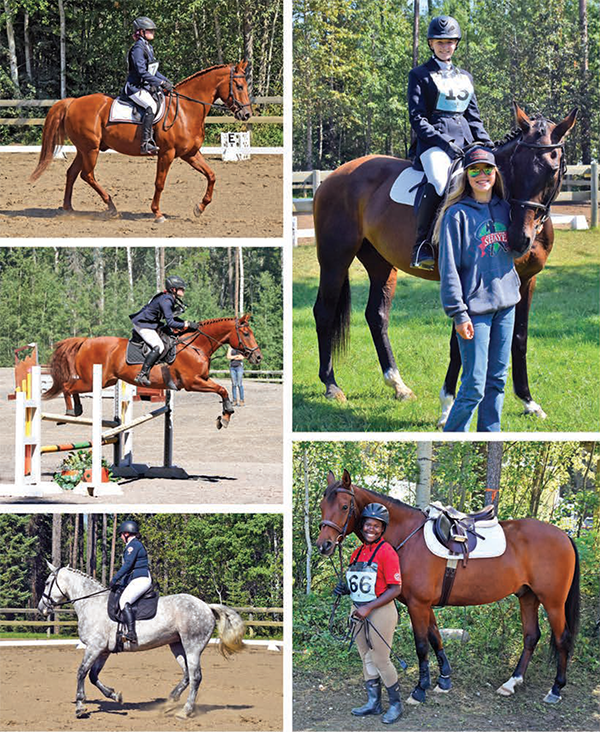
Above/Below: Rallies consist of a three-phase event (dressage, cross-country, and show jumping). Competitors are also scored on stable management, which involves many aspects of horse care. These photos show some of the action and friendly competition from the 2022 Pony Club National Rally held at Prentice Creek Equestrian Centre in Clearwater County, Alberta with riders from coast to coast participating. Photos courtesy of Kelly Brouwer
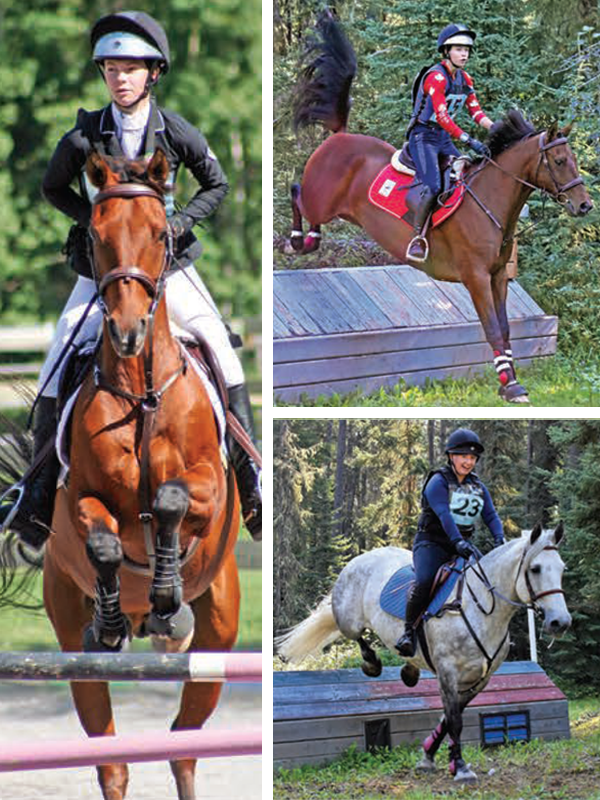
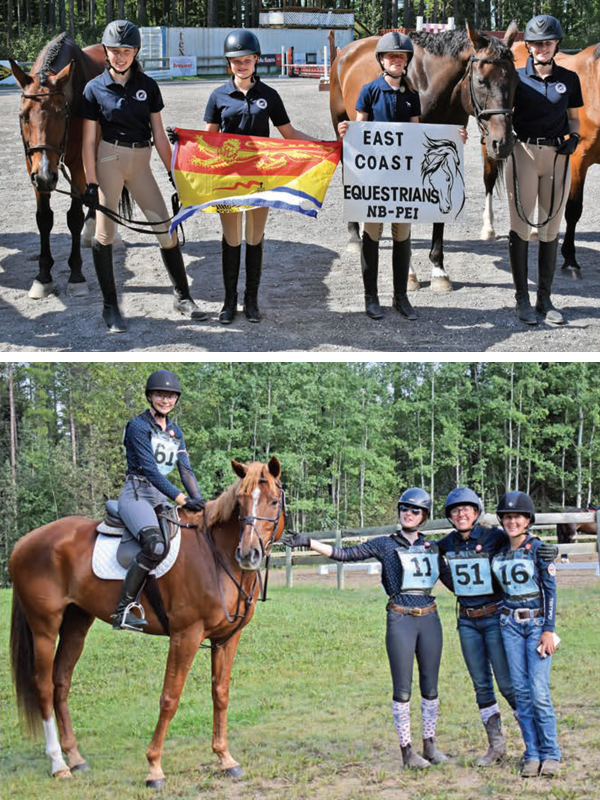
As society and Canada’s horse industry changed, so did the perceived value of Pony Club. Pony Clubbers were respected and valued for their strong riding skills and well-developed horsemanship knowledge. Pony Club was a place where youths formed friendships and tried different equestrian disciplines while developing values of sportsmanship, teamwork, and volunteerism. It was one of the most popular horse activities for Canadian youth.
Gilbert writes that as volunteerism began declining and private equestrian facilities developed, competitive junior riders with non-Pony Club coaches often dropped out to pursue higher level sport-specific competitions. More youth started specializing in hunter-jumper, eventing, or dressage.
Related: The Story of Paralympian Lauren Barwick
“Although many Pony Club alumni state that Pony Club was the most supportive and encouraging equestrian community they were part of, not all considered the calibre of riding to be as high as the level of riding found elsewhere,” writes Gilbert.
Those who weren’t in Pony Club only learned the riding discipline that was taught at the facility they attended. Plus, their non-riding stable management and horsemanship skills developed slowly or not at all — something that is common, today.
“There’s a night and day difference in knowledge between kids who are in Pony Club and those who aren’t,” says Jonathan McWhir, an executive of the British Columbia Lower Mainland Region.
In the 1990s, Pony Club membership began declining. Regional shows offering English, Western, and gymkhana classes shrunk as riders pursued specific sports: dressage, hunters, show jumping, and three-day events. In 2010, there were approximately 5,800 CPC members. That decreased to about 2,000 in 2022.
“I think part of the membership decline is because Pony Club is a volunteer-based organization and it requires a lot of time from members’ parents,” says Brouwer. “Also, more youth are pursuing post-secondary education and they simply don’t have the time, energy, or finances for Pony Club while going to college or university.”
In an attempt to boost membership and respond to current needs, Pony Club members can now be tested in specific horse sports, stable management alone, or a combination of both. Those choices have increased membership in the Alberta South region and encouraged members to pursue the more difficult upper levels.
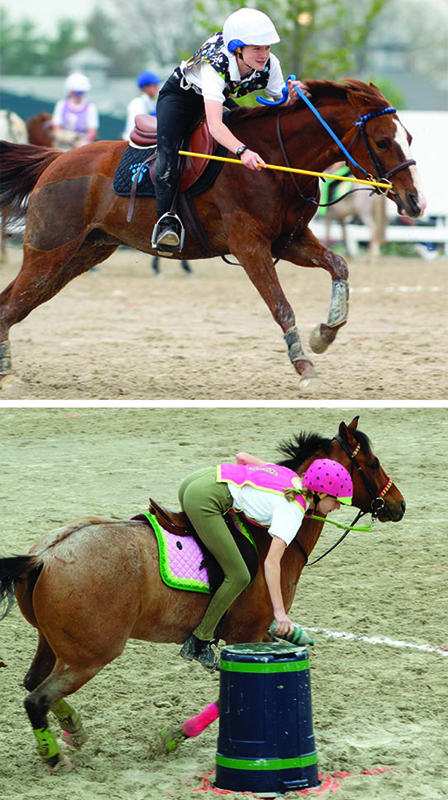
A team competition played by Pony Clubs around the world, Prince Philip Games help promote the Pony Club motto: Character, Loyalty, Sportsmanship. In the games, children use their riding skills and rapport with horse and human to gain confidence while participating in fun competitions. Photos: Clix Photography
“Pony Club used to be focused on producing all-around horsemen,” says Brouwer. “So, kids had to complete dressage, show jumping, cross country, and stable management requirements at every level. There wasn’t any streaming [specialization]. If you didn’t have the right horse, you couldn’t move up the levels.”
“But now, lots of kids want to do just their stable management or show jumping or dressage,” explains Brouwer.
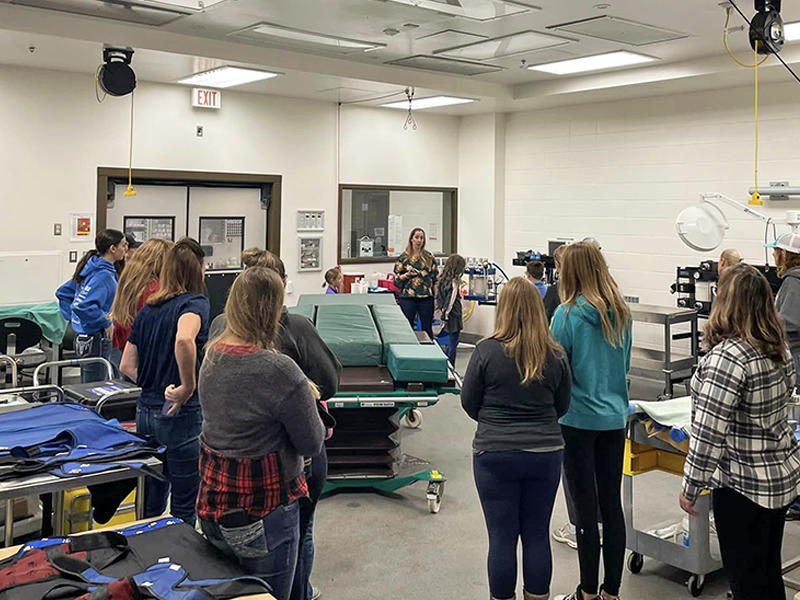
DeWinton Pony Club members learning at the University of Calgary. Photo: Tina Watkins DeWinton Pony Club
CPC also introduced the Horsemasters program in 2015 to attract members over age 21.
“A lot of Horsemasters are moms that have always wanted to be in Pony Club but never had the opportunity,” says Brouwer. “Now they’ve bought their daughter a horse and a trailer and they want to ride, too. They’re not just watching their kids ride but are getting out and riding themselves.”
The program is available across Canada, depending on whether the branch has the interest and capacity to support the program.
McWhir signed up as a Horsemaster with the Boundary Bay Pony Club in BC in 2016 at age 49. As a novice horseperson who was riding his wife’s 17-hand high off-the-track Thoroughbred mare, McWhir decided he needed help learning how to manage the mare better. He also wanted to share an activity with his son, then aged eight, who was already a Pony Club member.
“Understanding how horses react and how to handle them — Horsemasters provided information that I’d never even thought about before,” says McWhir.
McWhir’s daughter, then aged six, joined Pony Club the same year he did.
“I think Pony Club has made a huge difference with the kids,” says McWhir. “They’re a lot more confident around the horses and they know what they’re talking about.”
McWhir and his kids have gone to show jumping championships and quiz, together. Plus, he’s completing the same Pony Club levels as his son.
“We do the exact same exams, so there’s a little rivalry between us,” he laughs. “It’s all the same information but I’m in the Horsemasters category.”
Six years later, McWhir and his son have passed their C level together, his daughter has her D2 level and his wife is the regional chair.
“I encourage parents that have their kids in riding lessons to sign up [for Horsemasters],” McWhir says. “They say, ‘I know nothing about horses’ and I say, ‘That’s why you should do it.’ You’ll learn so much.”

Emma White, a C level rider from the Dufferin County Pony Club, ON, and her horse Ruby, after winning the title of Overall Champion in Regional Dressage. Photo: Carolina White
That enthusiasm for learning about horses is what continues to enthrall horsemen and women the world over. It’s also what Canadian Pony Club continues to instill in members, along with teamwork, volunteerism, and a passion for horses. With a long history of producing highly educated horsemen and women, hopefully Pony Club continues for many years to come, developing more of Canada’s top equestrians.
Related: A Country Built on Horse Power
The Founders of Canadian Pony Club
Inspired By a Vision of Better Horsemanship
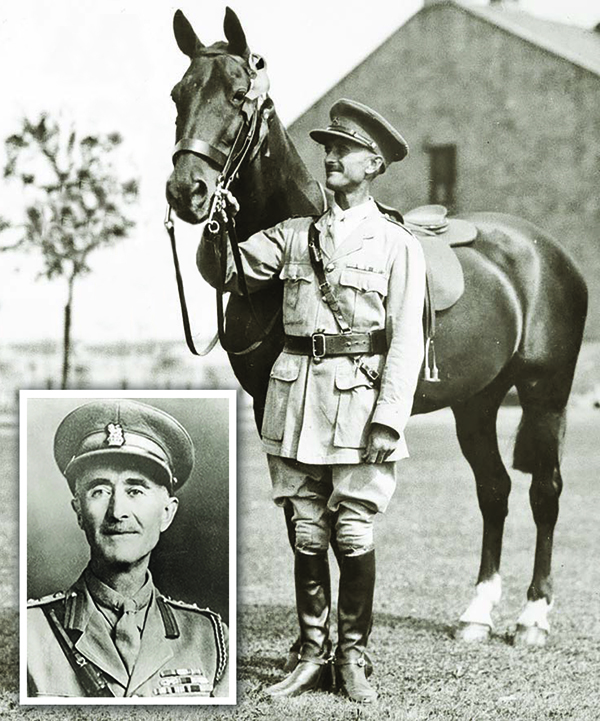
Lieutenant Colonel R.S. Timmis and his horse Bucephalus (above) at the Canadian National Exhibition stables in Toronto, Ontario in 1932. Bucephalus (named after Alexander the Great’s horse), was an ex-troop horse and 15 years old at the time. At only 15.3 hands high “he had cost the government only 175 dollars when bought in 1920 — he had spring in his heels and fire in his belly,” wrote Brereton Greenhous in his book Dragoon.
Lieutenant Colonel R.S. Timmis saw active service in World Wars I and II. In WWI as a member of Canada’s calvary force, his service involved, among other things, riding his horse, armed with a sabre, against German machine gun nests. Between the wars he earned his Doctor of Veterinary Medicine degree. In addition to being a veterinarian, he authored several books on the subjects of horsemanship, horse health, and training. He was the first District Commissioner of Canadian Pony Club. Photos (above) courtesy of Royal Canadian Dragoons Archives
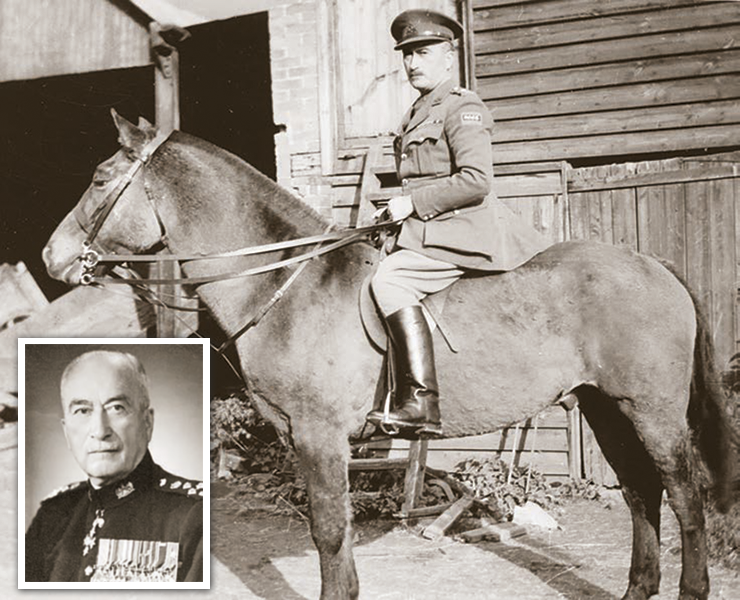
Brigadier General Clarence Sparks McKee in 1941 (above). He was instrumental in bringing Pony Club to Canada in 1934. Among his many achievements, he was a decorated veteran of World Wars I and II. He was a lawyer and a stockbroker, and became general manager of Toronto’s Royal Winter Fair in 1945. He rewrote the Rules of Racing for the Ontario Racing Commission. He was a lecturer at Humber College in Toronto on Horsemanship and Thoroughbred racing, and donated a good part of the horse library to Humber College. Photos (above) courtesy of Fraser McKee
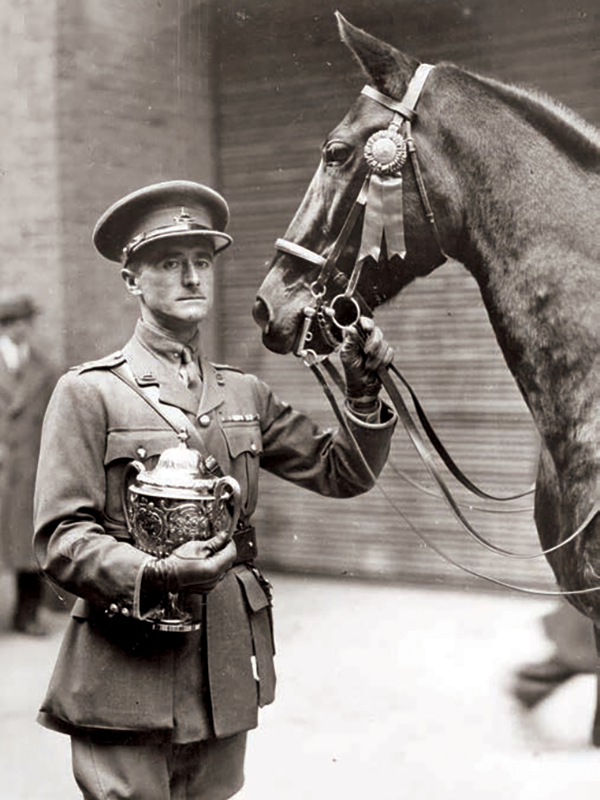
Lieutenant Colonel R.S. Timmis and Bucephalus in 1927 (above). Lt Col Timmis holds the George III Gold Challenge Cup, which he won at the world army horse jumping championships held in New York, where they competed against contenders from Britain, France, and the United States. Photo (above) courtesy of Royal Canadian Dragoons Archives
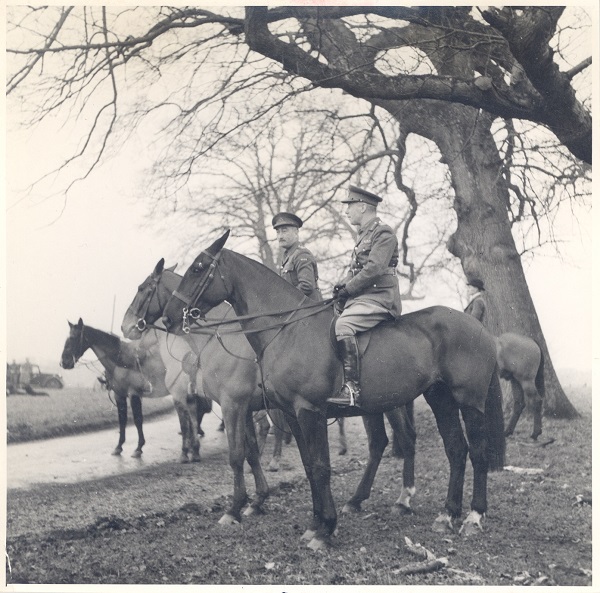
Brigadier General Clarence Sparks McKee (above, behind) hunting in 1941 at the Crawley and Horsham Hunt in England with Major General George Pearkes (front), the future Lieutenant Governor of BC. Photo (above) courtesy of Fraser McKee
Related: Pony Club - Incubating Canada's High-Performance Riders
Related: 4-H Canada - Learn to do by doing
Main photo courtesy of Tina Watkins, DeWinton Pony Club



